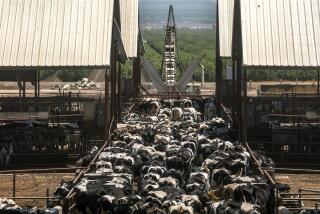BREEDING BIRDS: CALIFORNIA QUAIL
- Share via
CALIFORNIA QUAIL
(Callipepla gambelii)
Description: Most notable feature is its tear-drop shaped plume or double plume. Is brown and gray above with brown sides and scaled underparts. Males have paler forehead, black throat and brown patch on underbelly.
Habitat: Brushy and cultivated areas in suburbs; chaparral and open woodlands. Very gregarious, often assembled in large coveys.
Diet: Foliage, acorns, fruit, insects, snails.
Displays: During courtship, male bows, fluffs feathers, droops wings and rushes toward female with tail spread.
Nest: Makes a shallow depression lined with dead leaves and grass. Is usually concealed in taller grasses or shrubs. Occasionally constructed above ground in bushes or trees.
Eggs: White or creamy, marked with brown.
Call: A three-note chi-ca-go sound.
Breeding bird atlas: To report bird breeding activity in your neighborhood, or to get information on the breeding bird atlas, call Sea and Sage Audubon Society members Sylvia Gallagher, (714) 962-8990, or Nancy Kenyon, (714) 786-3160.
Note: Map is divided into 5-kilometer squares so that Audubon Society volunteers can more easily survey areas on a regular basis.
Sources: Sea and Sage Audubon Society; “The Birder’s Handbook,” Ehrlich, Dobkin and Wheye, Fireside Books (1988); “Field Guide to the Birds of North America,” National Geographic Society (1987); “Birds of Southern California: Status and Distribution,” Garrett and Dunn, Los Angeles Audubon Society (1981).
More to Read
Sign up for The Wild
We’ll help you find the best places to hike, bike and run, as well as the perfect silent spots for meditation and yoga.
You may occasionally receive promotional content from the Los Angeles Times.






